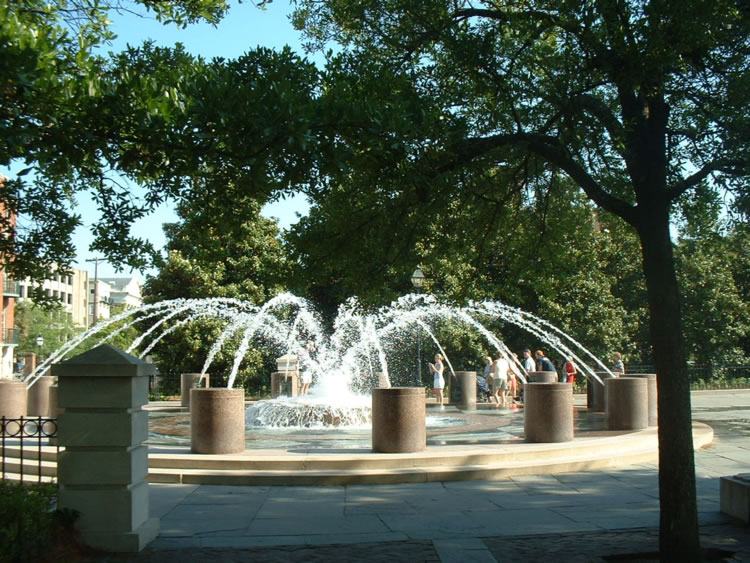By Kyra Morris, contributing editor | The nature of Charleston’s hidden jewel qualities is like a cell tower sending out signals to the world – “Come visit. Come visit. I have preserved history, world-class restaurants, renowned golf courses, beaches, shopping, burgeoning theater and a thriving arts community.” The world is receiving the signals and responding. The tourists are here.
 This is not a new phenomenon for Charleston. The first “Tourism Impact and Management Study” I found was done in 1977. It noted:
This is not a new phenomenon for Charleston. The first “Tourism Impact and Management Study” I found was done in 1977. It noted:
“The dramatic increase in tourist-related activity in Charleston over the past few years has provoked expressions of alarm by residents concerned with maintaining the amenities and quality for which the City is known. Moreover, there is general recognition that the City is not equipped adequately to serve and manage growing numbers of visitors.”
This message was repeated in the “Tourism Management Plan 2015 Plan Update”:
“It [tourism] also represents a challenge for our community. We must remain vigilant that tourism does not damage the city’s authenticity and sense of place or negatively impact residents’ quality of life.”
When I read both the studies from 1977 and 2015 on tourism, at first I was both puzzled and amused that the identified problems are still the same. Transportation systems are insufficient. Parking is a problem. Public facilities are needed within tourist destinations. The carriage rides through historic areas cause undue congestion. Even the control and management of the cruise ships are in both reports.
One of the interesting facts that I learned about was that tourism is not only regarding people who are “from-off.” Our residents participate in and enjoy the many of the same attractions that bring the tourists to our community. SEWE, The Wine and Food Festival, and Spoleto are just a few of the events that both attract tourists and encourage my friends and family to come spend a few nights at La Maison Du Morris. Whether we enjoy these destinations like the James Beard-awarded restaurants alone or with our visiting friends and family, we, as locals, are part of the tourism impact.
The recent advent of Boeing created an urgency of action to relook at all the growth occurring in Charleston. Charleston attracted a major corporation to relocate vital parts of their business to our community. Their appearance on our horizon quickly compounded the need for more attention to the same issues that tourism study identified. Many of the Boeing employees move to Charleston from other parts of not only America but the world. These employees themselves may act like tourists at first, and over time they have their friends and family come to enjoy the Charleston attractions also.
The infrastructure to manage the flow of visitors to, from and around our tourist attractions is insufficient. We had and still have no functioning public transportation nor do we encourage alternative modes of bicycles or safe-attractive pedestrian paths. Cars are the still the means of getting around. Yet the streets are quite narrow. Then once you get to where you want to go, where do you park?
Charleston’s tourism attractions are also “real.” We have real historical, well-preserved buildings and real historical residential neighborhoods. We have real locally-owned and -run restaurants and shops. We have real rivers that create our peninsula and surrounding areas. We have real beaches and other wild life areas. It’s this “realness” that makes it more difficult to solve these problems. If we harm the “realness,” we harm both our quality of life and the charm that attracts the tourists.
Usually I like to write something that shows a problem and then suggests a solution. I have no solutions for these issues. Competent, respected community leaders have been discussing these same things for over 37 years. I do believe though that we – all of us in Charleston, Mount Pleasant, North Charleston, Summerville and all the municipalities and communities in the tri-county area – need to break down the political barriers and work together to project thoughtfully into the future regarding these issues.
Our ability to make Charleston more desirable is happening daily. We are a global, world-class community, and we’re continuing to get better at the things that make people want to come here both to visit and to live. Since 1977, we have been working on the issues of transportation, traffic congestion, parking, preserving green space and wildlife refuges, yet they are still major concerns that have not been resolved while the numbers of tourists continue to increase. Our hidden jewel is no longer hidden, and we can’t take it back. Let’s come together as a whole community to sustain Charleston’s gem-like qualities now and for our children’s children.




 We Can Do Better, South Carolina!
We Can Do Better, South Carolina!
























